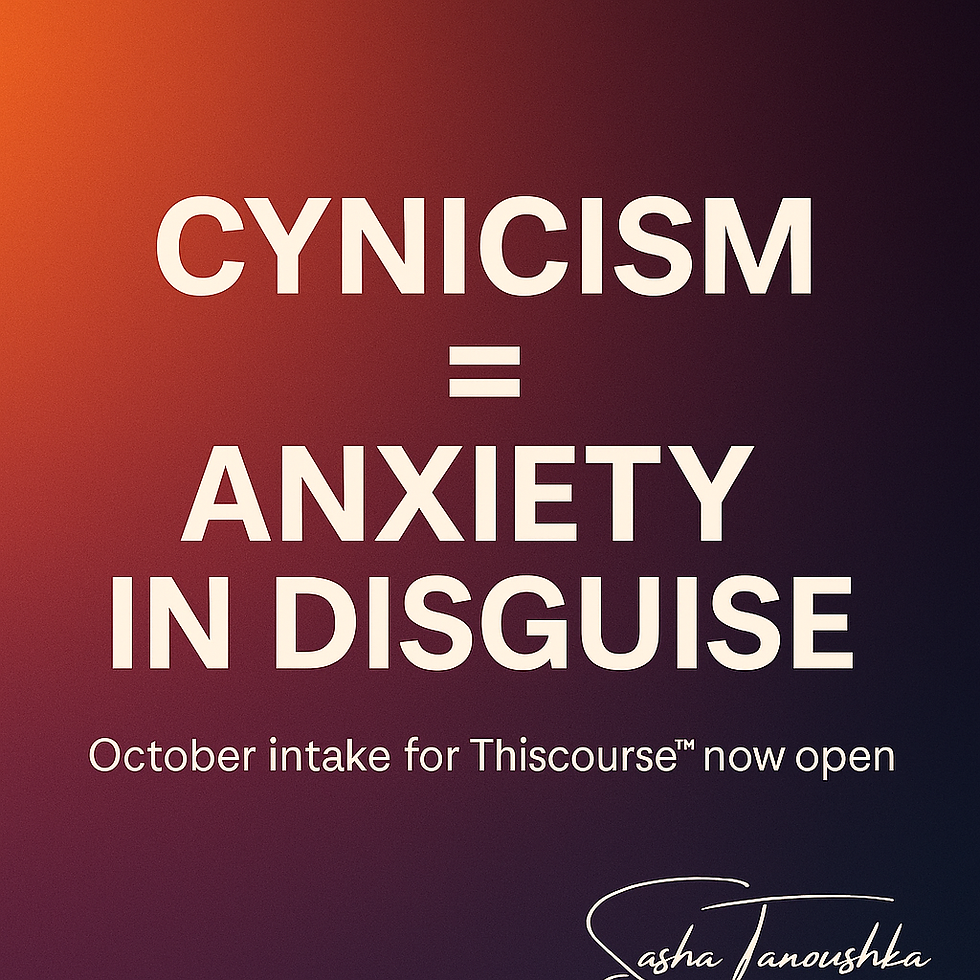Choosing Shadows: How One Artwork Found Its Place in My Healing Space
- Sasha Tanoushka BCH IACT

- May 2
- 3 min read
By Sasha Tanoushka
The day I first saw Gwen VanSchaik’s screen print, I wasn’t looking for art. I was listening—for something wordless. Something deeper. Something that would resonate not just with my eyes, but with my nervous system. And there it was: a stark black-and-white composition, elemental and haunting. It did not simply catch my attention—it entered me. Or perhaps more truthfully, it called something out of me that had long been waiting.

The piece is difficult to describe, and I think that’s part of its power. It centers around a bold, monolithic form—almost ceremonial in its weight—anchored in a sea of fragmentation. On either side, what appear to be torn skins, weathered paper, or woven shadows evoke a rawness, a memory scape. It's ancient and modern, still and moving, chaotic and devotional. A paradox in print.
I chose it for my workspace. Not just as decoration, but as a declaration. This is where we do the work—the deep work. The kind of work where stories soften into symbols, and bodies learn to speak again.
As a transformational therapist and neuro-informed hypnotherapist, I guide people into landscapes that often defy words. Into body memories, into stillness, into grief, into reawakening. I use art, breath, movement, neuro-acoustics, and somatics. But most of all, I use presence. And presence, I’ve found, requires awe.
We speak often of resilience. Of grit. Of strategy and healing, and mental health. But awe—that sense of expansive wonder, reverence, and surrender—is too often left out of the conversation. And yet, research has shown that awe is one of the most transformative emotional states available to the human experience.
In a 2015 study published in Emotion, researchers Keltner and Haidt defined awe as “the feeling of being in the presence of something vast that transcends your current understanding of the world.” It’s a cognitive-emotional reset. When we’re in awe, we actually become more prosocial, more humble, more generous. Our sense of self expands and dissolves. We become part of something larger—and paradoxically, more in touch with our true self.
Let's look at Awe
Neuroscientifically, awe activates areas of the brain associated with the default mode network (DMN)—the same network altered in deep meditative states and hypnotherapy. It quiets the ego. It makes space. It invites. For humans, who are uniquely wired for symbolic thought and abstraction, awe is not a luxury—it’s a necessity.
And yet, so many of us live with awe-blocks.
Unresolved trauma—especially developmental and relational trauma—can make awe feel unsafe. The nervous system, trained to anticipate danger, may resist moments of expansion, pleasure, or surrender. We might intellectualize wonder instead of feeling it. We might even dismiss beauty as impractical or self-indulgent.
But healing reopens those doors.
In my sessions, and in my own journey, I’ve found that art can be one of the most profound keys. It speaks the language of the right hemisphere of the brain—intuitive, image-based, non-linear. The side of us that remembers without words. That senses what cannot be said. That cries before it understands why.
Gwen’s screen print now hangs on the wall in my space—not as décor, but as witness. As mirror. As shadow. As spell.
It invites me —to pause. To soften. To consider what wants to be seen, not just solved. What wants to be held, not just healed.
Art like this doesn’t just reflect the psyche. It participates in our remembering. It reminds us that the human capacity for awe is not a side note in the story of our evolution—it’s central. It’s sacred. And it’s available again, once we begin to trust the spaces within us that we were once taught to fear.
To those on the path - of therapeutic expansion, of art-making, of unmaking and becoming—I hope you find your own image, your own texture, your own still-point in the storm. Let it live with you. Let it be with you. Let it become your silent co-facilitator.
Thank you, Gwen, for making a portal, not just a print.
And to those reading this ...perhaps today is the day you, too, bring something sacred home.



Comments